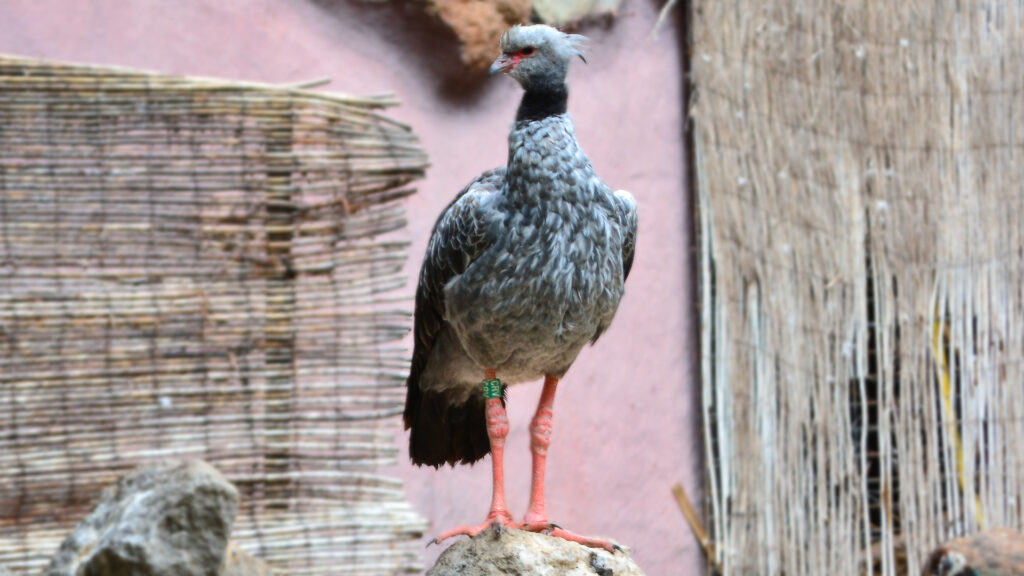SOUTHERN SCREAMER
Chauna torquata

LENGTH

83 – 95 cm
weight

4,4 kg
Lifespan

15 years
The southern screamer (Chauna torquata) is a large bird of the Anhimidae family, related to ducks, swans, and geese, although its appearance is very different. It inhabits wetlands in South America and is notable for its powerful voice and robust appearance.
General characteristics
This bird measures approximately 83 to 95 cm in length and has a wingspan of around 170 cm. It weighs around 4.4 kg. Its plumage is light gray, with a characteristic black and white “collar” around its neck. It has long pinkish legs and wings with curved spurs on the front edge, used for defense. There is no strong sexual dimorphism: males and females look very similar.
Feeding
It feeds mainly on stems, leaves, and seeds from aquatic plants or wet meadows. It also consumes small invertebrates.
Distribution
The southern screamer is found in south-central South America: Argentina, Uruguay, Paraguay, Bolivia, Brazil, and parts of Peru. It prefers wetlands, lagoons, estuaries, slow-moving rivers, and flooded areas, often with aquatic vegetation or wet grasslands.

Behaviour
The southern screamer usually gathers in flocks of up to 100 individuals, but becomes highly territorial during the breeding season. During reproduction, it becomes territorial, and pairs perform loud duets that can be heard for miles. It also uses its wing spurs to defend its territory or its young.
Reproduction
Pairs form lifelong bonds. Both members build the nest near water, using reeds and vegetation. They lay between 2 and 7 eggs (usually 3-5), which are incubated by both parents for around 43-46 days. The chicks are independent within a few weeks of leaving the nest.
Did you know?
Their calls can be heard from more than 2-3 km away, so they were used as “living alarms” to protect poultry.
They have bony spurs on each wing that serve to defend themselves from predators or rivals.
Despite its robust appearance and large size, its meat is not highly prized because it contains many air pockets and is not very tasty.
Threats
The greatest threat to this species is the loss or degradation of its wetlands due to agriculture, drainage of flooded areas, and human expansion.
Conservation status

The International Union for Conservation of Nature (IUCN) classifies the southern screamer as Least Concern, since its population, although facing threats, is considered stable and its distribution is widespread.